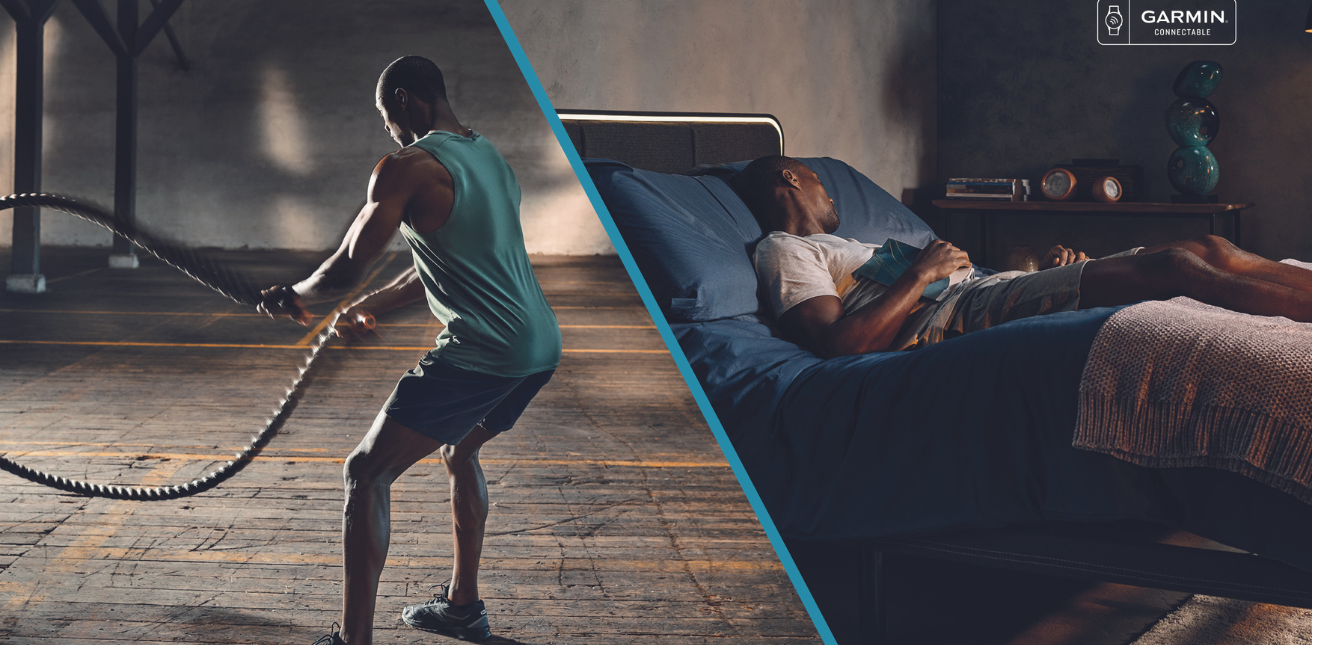If you're looking for a new bed to improve deep sleep and overall sleep quality, and recovery, we have one question: Have you heard of a zero gravity bed?
Zero-gravity beds may seem like something out of a sci-fi movie, but they offer real-life advantages. Zero gravity beds are named for the position they put your body in and provide numerous health benefits. And while you won't necessarily be floating in mid-air, you will experience a weightless sensation that can help improve your sleep, recovery, and general well-being.
Let’s discuss the basics of zero gravity beds, the benefits of sleeping in the zero gravity position, and how Ergomotion’s adjustable beds can help you achieve the best night’s sleep you’ve ever had.
What Is the Zero Gravity Position?
The zero gravity position is named after the neutral body position (NBP) developed by NASA to mimic weightlessness in space. A zero-gravity sleeping position puts your head and feet slightly above your heart as you sleep on your back. The placement is at a 120-degree angle.
What Is a Zero Gravity Bed?
A zero gravity bed is an adjustable bed with an automatic setting allowing you to raise the head and feet of the bed to sit or lie down in the zero gravity position. If you share your bed with another person, a split king design offers personalized controls over position and, ultimately, sleeping comfort.

6 Benefits of the Zero Gravity Position
While zero gravity sleeping isn't for everyone, there are several benefits to sleeping in the zero gravity position that may aid your sleep quality and overall health. Here are six to consider:
Snoring
The zero gravity sleep position is ideal for someone who sleeps on their back but tends to snore. Snoring is the direct result of the soft tissue in your throat and excess tissue in the neck obstructing your airway. Loud snoring is a common symptom of obstructive sleep apnea.
Obstructive Sleep Apnea
When someone has obstructive sleep apnea, the muscles in their throat relax when they sleep. This allows the soft palate and other structures in the throat to slide back and close the airway. With the airway closed, you stop breathing. After a few seconds, your brain wakes you up to get you to breathe again.
Obstructive sleep apnea is a serious medical condition. It can lead to:
- Daytime sleepiness
- High blood pressure
- Heart problems
- Type 2 diabetes
- Metabolic syndrome
- Complications from other medical problems
- Liver damage
One possible solution for obstructive sleep apnea is sleeping on your back with your head elevated in a zero gravity position. When in the zero gravity sleep position, your head is elevated. That can prevent the tissue in your throat from falling backward and blocking your airway.
Leg Swelling
People experiencing circulation problems in the legs can also benefit from a zero gravity bed. The zero gravity sleep position raises your feet slightly above your heart, helping improve circulation in the legs and feet. Since this kind of edema or swelling in the lower extremities can put you at risk for blood clots in the legs, it’s best to reduce the opportunity for swelling whenever possible.
Acid Reflux & Digestion
Acid reflux, or the more severe form known as gastroesophageal reflux disease (GERD), occurs when stomach acid flows up the esophagus. Lifestyle changes are necessary to manage this disease, such as avoiding greasy foods and losing weight.
Acid reflux tends to get worse at night. Adjusting how you sleep is another way to control it. When it comes to acid reflux, gravity is your friend. Changing your sleep position so your head is slightly raised can help keep stomach acid from rising and aid in better digestion.
Lying flat on your back, on the other hand, takes gravity out of play. This means stomach acid can quickly rise into the esophagus. Left untreated, acid reflux can cause damage to the esophagus and may lead to esophageal cancer.
Neck & Back Pain
The zero gravity sleeping position also takes the strain off critical joints and your spine. When combined with a neutral posture during the day, zero gravity at night can mean less neck, lower back, and sciatica pain.
Recovery
In addition to improving sleep with certain health conditions, the zero gravity position can help you recover after exercise.
Have you ever noticed runners placing their hands on their knees to rest? This is an instinctive position that helps reduce the amount of weight on our joints and muscles. This vertical version of the zero gravity position allows for better diaphragm function and immediate recovery from high-intensity training.
Similarly, resting the body in a neutral, zero gravity position can also promote recovery efforts by taking pressure off of aching joints. If exercise-induced pain makes it difficult to sleep, a zero gravity position may help take pressure off of your back, spine, and legs, helping you to fall asleep and, in turn, allow your body to heal and recover.
